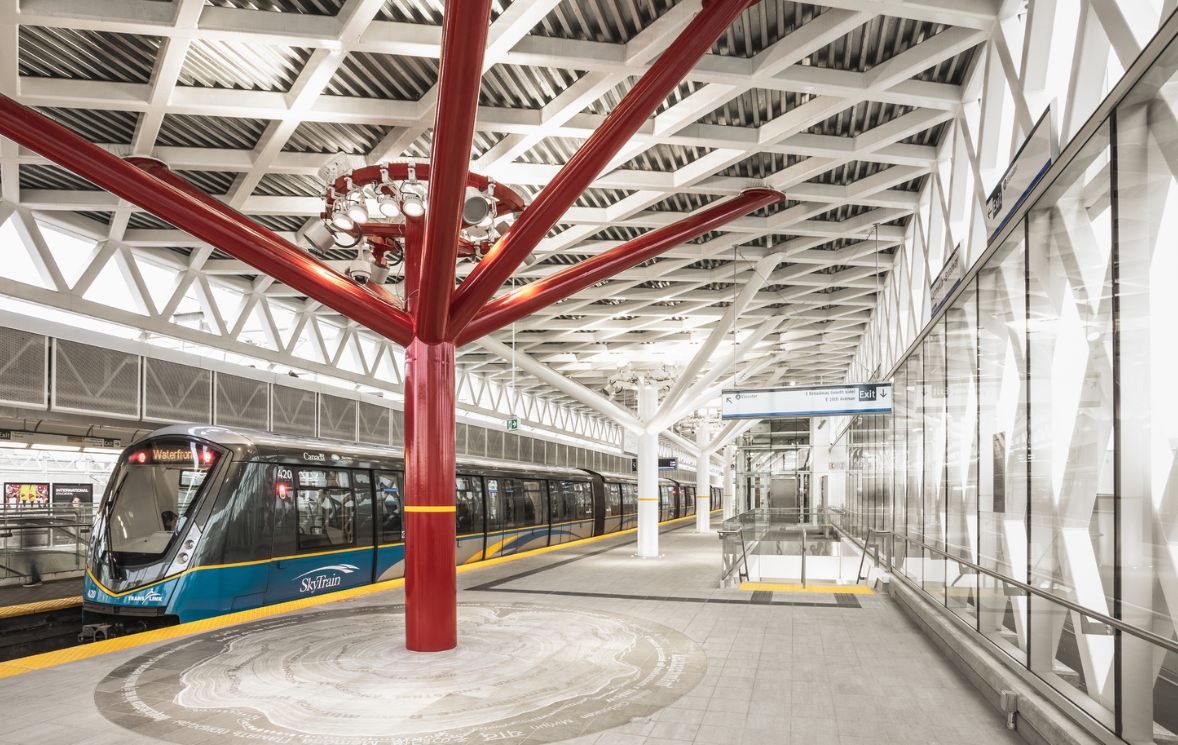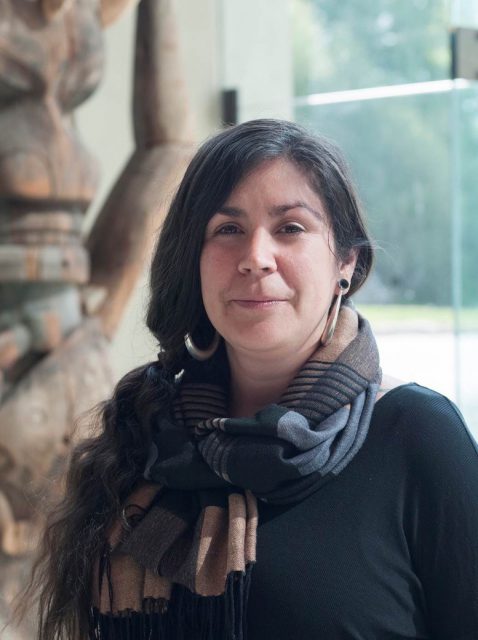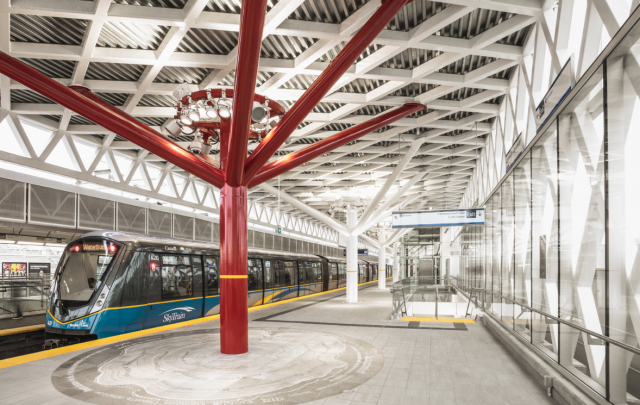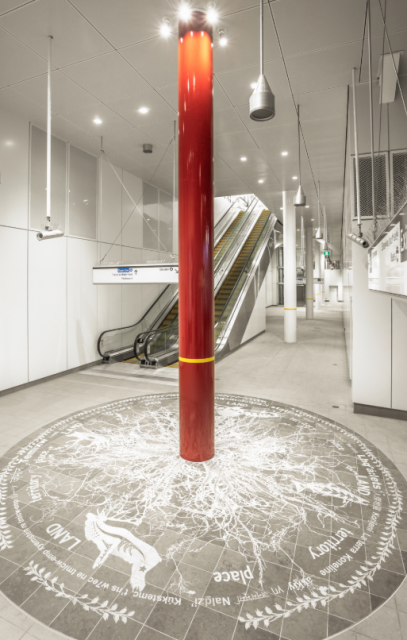Meet Tania Willard: The artist behind Commercial–Broadway’s public artwork
Meet Tania Willard: The artist behind Commercial–Broadway’s public artwork


For those of you accessing the new platform at Commercial–Broadway, a stunning new piece of public art awaits!
Produced by Tania Willard, of Secwépemc and settler heritage, Rule of the Trees is a work that acts as a reminder of the Indigenous lands beneath our feet.
Tania works within the shifting ideas around the contemporary and traditional. She often works with bodies of knowledge and skills that are conceptually linked to her interest in intersections between Aboriginal and other cultures. Besides, Rule of the Trees, Willard has also worked on If the Drumming Stops, with artist Peter Morin, on the lands of the Papaschase First Nation in Edmonton, AB. Willard’s ongoing collaborative project BUSH gallery, is a conceptual land-based gallery grounded in Indigenous knowledges and relational art practices. Willard is an Assistant Professor at UBCO (Kelowna, BC).
We chatted with Tania about the role of art on public transit.
Tell us about yourself
I am a mother of two boys, and an artist who lives rurally on my land.
Why did you want to be a part of this public art program?
I wanted this project to be about the Indigenous narrative though out the city. Getting a public art commission on this scale was new for me at the time. I lived in East Vancouver for many years and knew the richness of the Commercial Drive neighbourhood.

Why is public art important to you?
All art is important to me, but public art in particular enjoys this more day-to-day space with people who have not come specifically to see art. Public art can be more of an encounter and is folded into public space. I think there should be more (of public art). I love taking the gallery out for a walk.
What role does transit play in your life?
I did use transit a lot when I lived in Vancouver, but I rode my bike a lot too. I live rurally on a reserve, to my knowledge there is very little transit on many Indian reserves in Canada.
What role does public art play on transit?
I am unsure, it played a role in supporting me as an artist while I was in production and all the people that contributed to the work but now it is an experiment and an encounter with the work that I can’t predict. I know though that when I rode transit I would read the poetry on the bus and was relieved for a break in the ad space. There is, of course, lots of other marking unsanctioned in public space that I also pay attention to.
What motivated you personally to work on this project?
I was selected as the commissioned artist and this is my work, but above that, I was committed to this area and it felt like a chance to comment on that in a place or neighbourhood that was close to me and has a very dynamic and diverse background and forefronts Indigeneity in the city.
Tell us about this piece of art you created.
Rule of the Trees is a work that acts as a reminder of the Indigenous lands beneath our feet. The Douglas fir hemlock and cedar forests covered this area and how our impact now affects those lives and balances.

How long did it take you to produce this artwork?
The work was in production for five years! Due to a number of factors and construction schedules, the work was in development for two years and then in fabrication for almost three years.
What was the biggest challenge for you for this project and how did you overcome it?
I fabricated the work myself, buying equipment and teaching myself how to use it. Then in the meantime, I also went back to school for my MFA and built a house on my land – and, of course, my mom job! Time management was always been my challenge.
Describe your feelings when you found out your artwork was chosen. Have you seen it on display yet – what was that like?
I was excited and nervous about this big plan I had set out for myself as my first public art project at this scale. I have not viewed the work with the station open yet – you all can tell me how it looks! I have seen it after installation was completed of course, but not in the context of the station being open.
What did you learn from this project/artwork?
Well, I learned a lot about forests and laser etching. I also learned about tile and the current diverse languages in the area. I learned about the critical nature of Indigenous languages whose ways of relating to the land through language are full of science, metaphor, poetry and methods of deepening our relationship to the land.
What do you want the public to know from it?
I want them to remember that wherever we build our cities there are Indigenous lands, forests and ecosystems that were and are and will be.
What kind of change do you want to see with your artwork?
I always want to see change – we have a long way to go, but we are such a quirky species I know that we can also be unbelievably beautiful, and anything can be possible – including living in ways which acknowledge Indigenous lands and authority as well as living with respect and reciprocity to the land and ecologies we live with.
Anything else I’ve missed, and you’d like to share?
The red poles act as signals, the work functions as really integrated with the station – appearing on the construction plans and integrated architecturally and this was important in terms of a record and data like I talk about as encoded in the tree rings. Our stories all spiral out told by the forests around us, if there is no forest what happens to our story?
Love public art? So do we! This isn’t the first time we’ve partnered with artists. Most recently, we partnered with the Emily Carr University of Art + Design to increase awareness about etiquette on transit through public art. In the coming few days, you’ll see some cool public artwork at Surrey Central. Stay tuned by following us on Facebook, Twitter, and Instagram!
Interviewed by: Tanushree Pillai





